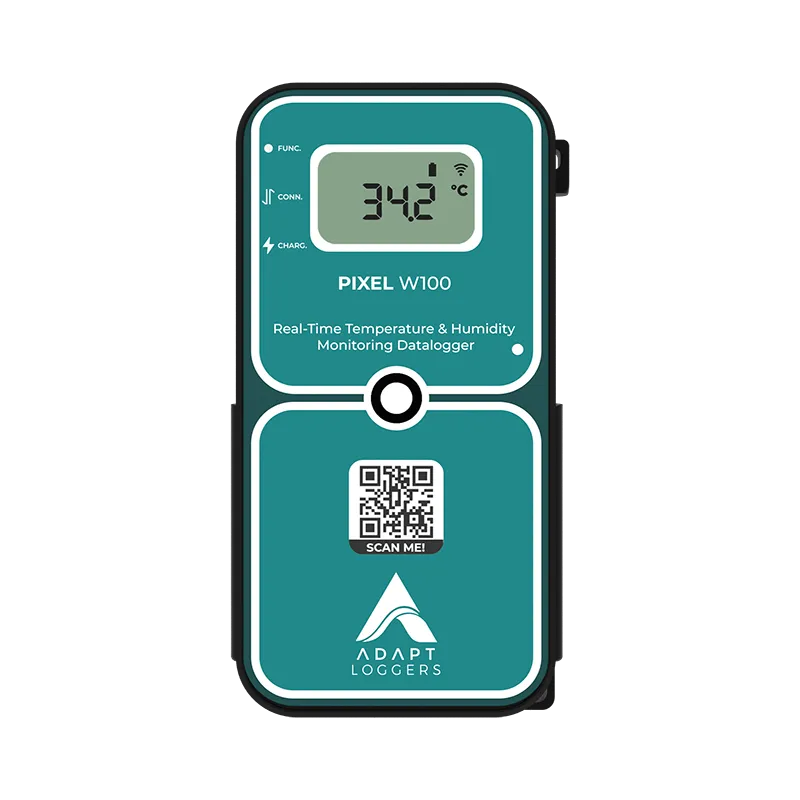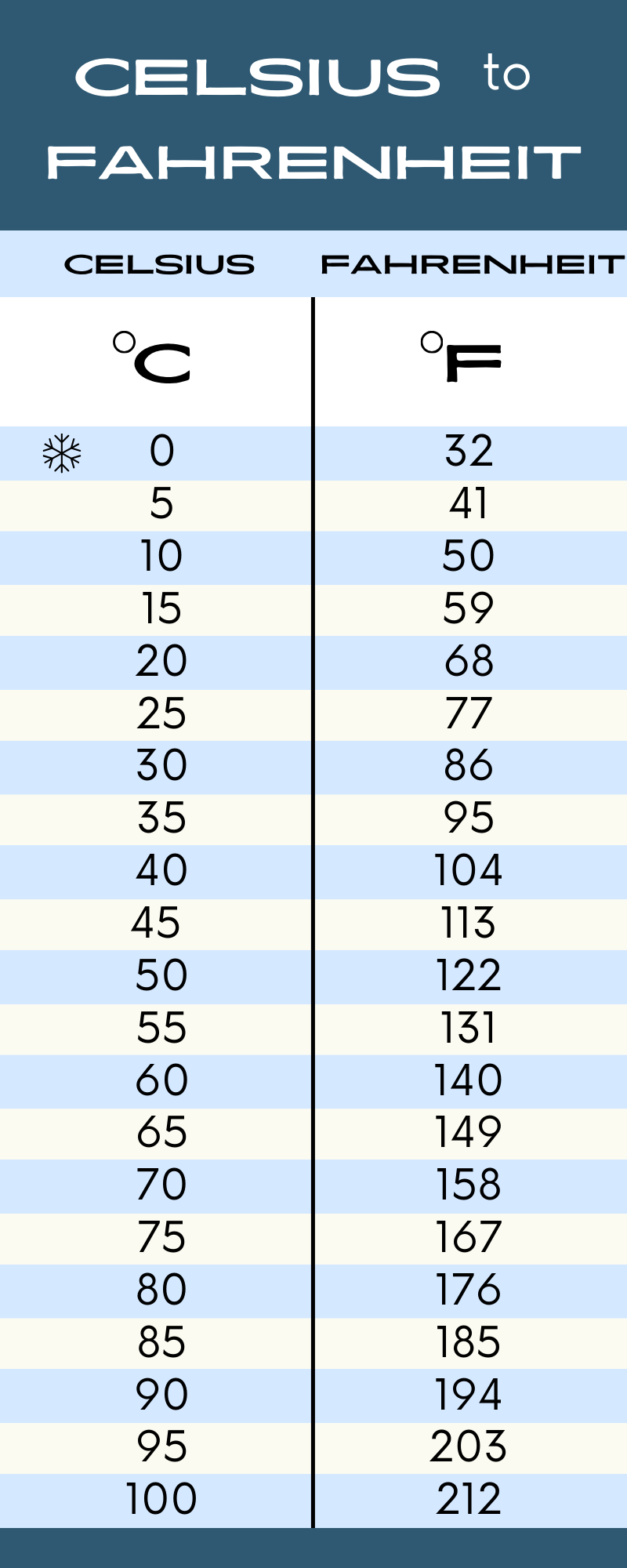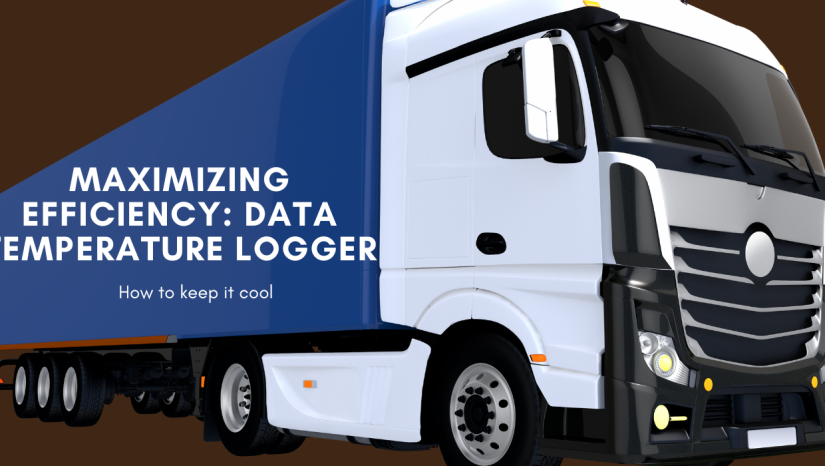Are you tired of feeling like a juggler, desperately trying to keep temperature-sensitive products from spoiling during transportation and storage? Look no further! We’ve got the ultimate guide for you on optimizing your cold chain solutions.
In this article, we’ll show you the benefits of using temperature data loggers. We’ll dive into calibration, accuracy, LCD displays, and PDF reports – all the tools you need to manage your cold chain efficiently.
Say goodbye to spoiled goods and hello to extended shelf life!

Temperatuer Data Logger
-
- Cold chain management is crucial for maintaining the integrity and efficacy of temperature-sensitive products like vaccines.
-
- Temperature data loggers and probes are key components of cold chain solutions, allowing for real-time monitoring and recording of temperature data.
-
- Effective cold chain management requires utilizing a combination of temperature loggers and probes to ensure accurate temperature monitoring at the point of contact.
-
- Choosing the right temperature monitoring system, considering factors such as connectivity options and temperature range, is essential for optimizing cold chain solutions.
Importance of Cold Chain Management
Cold Chain Management is crucial for ensuring the integrity and efficacy of temperature-sensitive products. Proper management of the cold chain is especially important for products such as vaccines, which require strict temperature control to maintain their potency. https://www.adaptideations.com/pixel-temperature-data-logger
A key component of effective cold chain management is the use of refrigerators equipped with temperature data loggers or monitors. These devices continuously monitor and record the temperature inside the refrigerator, allowing for real-time tracking and analysis of temperature fluctuations.
By regularly reviewing the data collected by the temperature data logger or monitor, any deviations from the recommended temperature range can be identified and addressed promptly. This proactive approach helps to prevent temperature excursions that could compromise the quality and effectiveness of the vaccines.
Understanding Cold Chain Solutions
To understand the solutions for optimizing the cold chain, it’s essential to explore the various options available for effective cold chain management.
One key component of cold chain solutions is the use of temperature loggers. These devices are designed to monitor and record temperature data in real time, ensuring that the required temperature range is maintained throughout the supply chain.
Wireless temperature loggers are particularly useful as they eliminate the need for manual data collection and provide immediate alerts if there are any temperature fluctuations.
Another essential tool is the probe, which is inserted into the product or package to measure the temperature directly. This enables accurate temperature monitoring at the point of contact.
Key Components of Cold Chain Management
When managing the cold chain, it’s essential to consider the key components that ensure the integrity and safety of temperature-sensitive products.
One of the most essential components is a temperature data logger. These devices, often equipped with a USB connection, allow you to monitor and record temperature and humidity levels throughout the cold chain. With the help of sensors and thermometers, they accurately measure and document ambient conditions.
Many temperature data loggers also come with an LCD display, providing real-time temperature readings. This information is crucial for maintaining the quality of temperature-sensitive products. By ensuring that the temperature remains within the specified range, you can prevent spoilage, maintain product efficacy, and comply with regulatory requirements.
Transitioning into the subsequent section about the benefits of temperature data loggers, these devices offer numerous advantages in optimizing cold chain management.

Benefits of Temperature Data Loggers
Temperature data loggers provide valuable insights into the conditions of the cold chain, allowing you to monitor and maintain the quality of temperature-sensitive products effectively.
A data logger is a device that records and stores temperature data over time. One of the main benefits of using temperature data loggers is their high accuracy in measuring and recording temperature. This ensures that you have precise information about the temperature fluctuations that your products are exposed to during storage and transportation.
Additionally, data loggers can be calibrated to ensure their accuracy, providing you with reliable data.
Another advantage is that temperature data loggers can generate PDF reports, making it easy to analyze and share the recorded data. This helps you identify any temperature deviations and take immediate corrective actions to prevent product spoilage or loss.
Choosing the Right Temperature Monitoring System
When selecting a temperature monitoring system, consider the specific requirements of your cold chain management to ensure optimal performance. One important factor to consider is the connectivity options available.
If you need real-time monitoring and remote access to temperature data, a system with WiFi capabilities would be ideal. On the other hand, if you require a standalone solution that doesn’t rely on internet connectivity, a USB temperature recorder might be more suitable.
Another crucial aspect is the ability to set customizable temperature alerts. This feature ensures that you’re immediately notified if the temperature deviates from the desired range, allowing you to take prompt action.
Additionally, consider the ambient temperature range in which the system will operate to ensure that it can withstand the conditions of your cold chain.
By carefully evaluating these factors, you can choose the right temperature monitoring system for your specific needs.
Now, let’s explore the benefits of implementing wireless temperature monitoring.
Implementing Wireless Temperature Monitoring
To implement wireless temperature monitoring, you’ll need a reliable and user-friendly system. One important factor to consider is the battery life of the monitoring devices. It’s crucial to choose devices that have long battery life to ensure continuous monitoring without interruptions. A system with a short battery life may result in data gaps and compromise the effectiveness of temperature monitoring.
Additionally, devices with low battery life would require frequent battery replacements, which can be time-consuming and costly. Therefore, when selecting a wireless temperature monitoring system, make sure to prioritize devices with extended battery life to ensure continuous and reliable temperature monitoring throughout the cold chain process. This will help to minimize the risk of temperature excursions and ensure the integrity of the products being monitored.
Transitioning into the next section on accuracy in cold chain monitoring, it’s important to consider the role of calibration in maintaining reliable temperature measurements.
Ensuring Accuracy in Cold Chain Monitoring
To ensure accurate cold chain monitoring, prioritize regular calibration of temperature monitoring devices. Calibration is crucial for maintaining the accuracy and reliability of temperature measurements. It’s recommended to calibrate your devices at least once a year, or more frequently if required by regulatory guidelines or industry standards.
During calibration, compare the readings of your temperature monitoring device with a certified reference thermometer or temperature probe. If any discrepancies are found, adjustments or repairs should be made to ensure accurate readings.
Additionally, it’s essential to consider the environmental conditions in which the devices are used. Extreme temperatures or exposure to moisture can affect the accuracy of the readings.
Regular calibration, along with proper storage and maintenance, will help ensure the accuracy of your cold chain monitoring system and protect the integrity of your products.
Best Practices for Cold Chain Calibration
For optimal cold chain calibration, it’s essential to follow best practices to ensure accurate temperature measurements and protect the integrity of your products. Here are three essential practices to consider:
-
- Regular Calibration: Schedule regular calibration of your temperature monitoring devices, such as data loggers or sensors. This ensures that they’re accurately measuring and recording temperature fluctuations within your cold chain.2
- Traceability: Maintain a detailed record of calibration certificates for each device used in your cold chain. This enables you to track the calibration history and establish traceability, which is crucial for regulatory compliance and quality assurance.
- Calibration Verification: Perform periodic checks to verify the accuracy of your temperature monitoring devices. This can be done by comparing the readings with a calibrated reference thermometer or using a known temperature source.
Monitoring Temperature and Humidity Levels
As you continue managing your cold chain, it’s essential to monitor the temperature and humidity levels to ensure the integrity and quality of your products. Temperature fluctuations can lead to spoilage or degradation of perishable goods, while high humidity levels can promote the growth of bacteria and mold.
To effectively monitor these parameters, you can utilize various tools such as temperature data loggers, wireless sensors, or temperature monitors with probes. These devices provide accurate readings and can be connected via USB or Wi-Fi for real-time monitoring. Additionally, consider using temperature loggers with LCD displays for easy visibility.
Regular calibration of these instruments is essential to ensure their accuracy. By closely monitoring temperature and humidity levels, you can promptly identify and address any deviations, thus safeguarding the quality of your products and maintaining compliance with regulatory requirements.
This brings us to the next section, where we’ll discuss strategies for maximizing battery life in cold chain solutions.
Maximizing Battery Life in Cold Chain Solutions
To maximize the battery life in your cold chain solutions, it’s essential to implement efficient power management strategies. Here are three key strategies to consider:
-
- Optimize power consumption: Ensure that your temperature data loggers are set to the appropriate sample rate and logging interval. Adjusting these settings can significantly impact battery life without sacrificing data accuracy.
- Utilize low-power modes: Many temperature data loggers have power-saving features such as sleep modes or power-down options. Take advantage of these features when the loggers aren’t actively recording data to conserve battery power.
- Choose energy-efficient devices: When selecting temperature data loggers, look for models that are specifically designed for low power consumption. These devices often have advanced power management features that can extend battery life, allowing for longer monitoring periods without the need for frequent battery replacements.
Effective Alert Systems for Cold Chain Management
To ensure seamless temperature monitoring in your cold chain solutions, it’s crucial to implement effective alert systems that promptly notify you of any deviations from the desired temperature range.
An effective alert system should provide real-time notifications, allowing you to take immediate action and prevent any potential damage to your cold chain products.
There are various types of alert systems available, including temperature data loggers with built-in alarms, wireless temperature monitors, and probe sensors that can be connected to a central monitoring system.
When choosing an alert system, consider factors such as accuracy, battery life, and ease of use. Additionally, ensure that the system provides customizable temperature thresholds and alarm settings to suit your specific cold chain requirements.
Cold Chain Management in Refrigeration Systems
Ensure seamless temperature monitoring in your cold chain solutions by effectively managing refrigeration systems.
Proper management of refrigeration systems is crucial for maintaining the integrity of temperature-sensitive products. Here are three essential strategies to optimize cold chain management in refrigeration systems:
-
- Regular maintenance and calibration:
-
- Schedule routine maintenance checks to ensure that your refrigeration systems are operating at the desired temperature range.
-
- Regular calibration of temperature sensors and probes is also important to ensure accurate temperature readings.
-
- Monitoring and logging:
-
- Install temperature data loggers or monitors in your refrigeration systems to continuously monitor and record temperature data.
-
- This will provide you with real-time information and help identify any deviations from the desired temperature range.
-
- Backup power supply:
-
- In the event of a power outage, having a backup power supply for your refrigeration systems is crucial to maintain the required temperature.
-
- Consider using battery-powered backup systems or generators to ensure uninterrupted cooling.
Ensuring High Accuracy in Cold Chain Monitoring
Achieving high accuracy in monitoring your cold chain requires properly calibrating temperature sensors and consistently logging temperature data. Calibration ensures that the temperature readings are accurate and reliable, allowing you to make informed decisions regarding the integrity of your products.
Regularly calibrating your temperature sensors minimizes the risk of temperature deviations and ensures that your cold chain is operating within the required temperature range. Consistently logging temperature data is crucial for identifying any potential issues or trends that may arise in your cold chain. By tracking temperature fluctuations over time, you can proactively address any deviations before they compromise the quality and safety of your products.
Implementing a reliable and user-friendly temperature monitoring system can streamline the data logging process, providing you with real-time alerts and reports for prompt action. With high accuracy in cold chain monitoring, you can confidently maintain the quality and efficacy of your products throughout the supply chain.
Generating PDF Reports for Cold Chain Compliance
When managing your cold chain, it’s essential to generate PDF reports for cold chain compliance. These reports provide a comprehensive overview of temperature and humidity data, ensuring that your cold chain is operating within the required parameters.
Here are three reasons why generating PDF reports is crucial for cold chain compliance:
-
- Documentation: PDF reports serve as official documentation that can be easily shared with regulatory authorities, auditors, and other stakeholders. They provide a detailed record of temperature fluctuations, ensuring transparency and accountability.
- Analysis: PDF reports enable you to analyze historical temperature data, identifying trends and potential issues. By reviewing these reports, you can make informed decisions to optimize your cold chain operations and mitigate risks.
- Compliance: PDF reports help you demonstrate compliance with regulatory requirements and industry standards. They provide evidence of proper cold chain management practices, ensuring that your products are safe and meet quality standards.
Cold Chain Management for Vaccine Storage
To effectively manage your cold chain for vaccine storage, it’s essential to monitor temperature and humidity data regularly.
Vaccines are highly sensitive to temperature fluctuations, and any deviations from the recommended storage conditions can compromise their effectiveness.
Utilizing a temperature data logger or monitor equipped with a probe is crucial in ensuring that the vaccines are stored within the required temperature range. Consider using a USB or wireless device that provides high-accuracy readings and allows for easy data retrieval.
Additionally, opt for a temperature monitor that offers real-time alerts in case of temperature excursions. Regular calibration of the device is also necessary to maintain accuracy.
Frequently Asked Questions
How Can Cold Chain Management Strategies Be Optimized for Effective Temperature Monitoring in Vaccine Storage?
To optimize cold chain management for effective temperature monitoring in vaccine storage, you need a reliable temperature data logger. It should have high accuracy, a long battery life, and the ability to provide real-time alerts.
What Are the Key Considerations When Choosing a Temperature Data Logger for Cold Chain Management?
When choosing a temperature data logger for cold chain management, consider factors like accuracy, battery life, and connectivity options. Make sure it meets your specific needs and can effectively monitor and record temperature data in your cold chain.
How Can Wireless Temperature Monitoring Systems Be Implemented in Cold Chain Management?
Implement wireless temperature monitoring systems in cold chain management to enhance efficiency and accuracy. Use sensors and probes to collect real-time temperature data, which can be monitored remotely. This ensures timely intervention and minimizes the risk of temperature fluctuations.
What Are the Best Practices for Calibrating Temperature and Humidity Levels in Cold Chain Monitoring?
To calibrate temperature and humidity levels in cold chain monitoring, start by ensuring your temperature data logger is accurate. Use a probe or sensor to verify readings against a calibrated thermometer. Keep records and perform regular calibration checks to maintain accuracy.
What Are the Most Effective Ways to Ensure High Accuracy in Cold Chain Monitoring?
To ensure high accuracy in cold chain monitoring, you need to focus on calibration, using a temperature data logger with a high-accuracy sensor, and regularly checking and maintaining the equipment to guarantee optimal performance.
By implementing effective cold chain management strategies and utilizing temperature data loggers, you can ensure the safety and efficacy of temperature-sensitive products. These tools provide real-time monitoring, accurate temperature readings, and vital information for maintaining the integrity of vaccines, medications, and perishable goods.
With the right system in place, you can optimize your cold chain solutions, extend shelf life, and preserve the quality of your products.
So why wait? Take control of your cold chain management today and experience the benefits firsthand.
